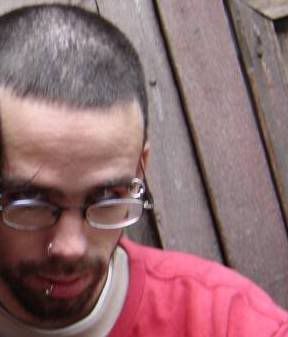Today was a highly theoretical day ;)... Most of the talks were highly methodological, with some scattered practical works.
Ward Wheeler, in a line similar to Grant and Kluge, argues that “objective support”, like Bremer support of Likelihood ratios are different to “average support”. His main argument, is that objective support is a better measure than average support, because it is based on a direct comparison of optimality criterion... I'm not agree xD.
Next, Pablo Goloboff showed that the common argument against weighting, that a character which is poor in clade is underweighted in a clade in which character has low homoplasy, is a problematic one, and that parsimony, as we know it, imply homogeneous weighting across the whole cladogram.
John Wenzel seems to be unsuccessful to show a different way to attack consensus trees. I think that agreement subtrees, the method that he defends is not as good as reduced consensus that can be found with TNT.
In an interesting talk, from philosophical, and statistical point of view, Chris Randle, showed that as actually implemented, Bayesian analysis in not bayesian, because the impossibility to implement a real definition of clade priors.
After coffee break, Steve Farris give an entertaining and clever talk about some misrepresentation of ideas of support by Grant & Kluge, and of course, re-affirms his masterful conclusion from his 1983 classic: parsimony is minimization of ad hoc hypotheses of homoplasy. I'm very happy to see the one that gives shape to actual numerical cladistics (and, I thinks, the major contributor of the theoretical development of phylogenetics in general!).
Then, a bunch of papers based on Pablo's implementation of continuous characters, using Farris' optimization, using Opiliones. But the most interesting contribution was from Santiago Catalano, who shows that landmark data can be viewed as a generalization of Sankoff's parsimony!
Afternoon starts with a presentation of the possibilities of EOL.org (Encyclopedia of Life) by Torstein Dikow, actually, apart of being as wonderful as Wikipedia, I do not see any application for EOL... (see Page's blog!)
Matthew Yoder, shows some wonderful ways to work using open source, in the development of his software for multi-author phylogenetic studies, with his sever-based Mx.
Then Rasmus Hovmoller, shows some interesting work to understand the spreading of avian influenza A, unfortunately, external problems was an obstacle to enjoy their results.
Federico López gives a talk about using conservation indexes to conservation in amazonia. I'm quite suspicious of that kind of indexes (although they are also bad, I think that Faith's PD is far better than Vane-Wright indexes!).
Norberto Giannini shows a new way to treat correlation of characters (“comparative method”) into a truly phylogenetic way. The method is excellent, and I think a real improvement in that field!
Fernando Noll, showed a beautiful work of behavioral data for Meliponini bees, that include oviposition and nest architecture.
Jeffrey Skevington use dragonflies from Fidji, and he tries to explain the origin of sexual bias on this beautiful insects. Juan Larrain shows his molecular analysis of a group of mosses, and compare his results with a preliminar set of morphological characters.
Martín Ramírez gives an excellent talk about the usefulness of ontologies for phylogenetic analysis! I feel that ontologies are an important step in the maintainability of morphological data (and their subsequent usage), but I think that although wonderful, the re-using, specially from authors extern to the original work, seems to be difficult (at least, as actually doing).
To finish the day, Johnatan Liria talks about k selection using some of my old TNT scripts xD...

No hay comentarios.:
Publicar un comentario